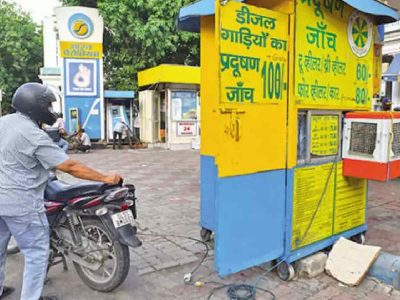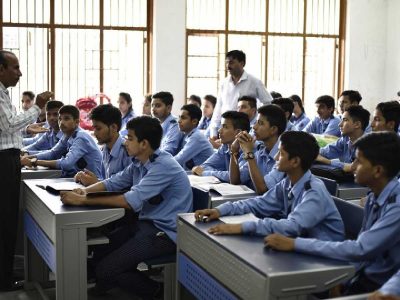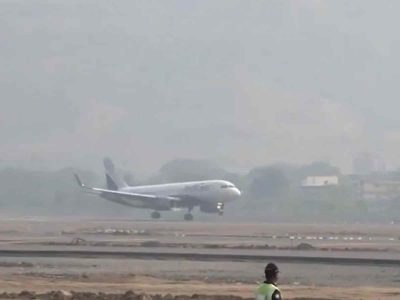On 25 September, the flood and irrigation department issued a flood warning due to the anticipated rise in Yamuna water levels above the danger level. Water levels at Old Railway Bridge, which is used as a baseline for measuring the city’s flood condition, rose to 204.09 metres.
The Hathnikund Barrage in the neighbouring state of Haryana released more than 22,996 cusecs of water, which is what caused the surge in water levels. At 205.33 metres, the level of risk is indicated.
On 13 August, the flood control room reported 205.92 metres of water level – which was above the danger level of 205.33. Consequently, many families living on the floodplains evacuated their houses at night as knee-deep water reached their hutments. Most of them shifted to government shelters and higher plains.
If the situation continues like this, officials have said that the people at Yamuna floodplains are likely to be evacuated again and warning drives have already been initiated.
Still in the dark
While unannounced evacuation remains a big problem for those living near Yamuna floodplains, electricity and water supply remain two issues they have to face irrespective of water levels. According to Rambabu, who lives on the floodplains below the Meerut-Delhi highway near Sarai Kale Khan, electricity has not been available since he started living here 15 years ago.
“We have all the official documents from the Delhi government. In 2021, we applied for electricity meters and the officials came and marked our houses for initiation of the process. But this was also the time our houses were bulldozed and this matter of electricity came to a halt.”
Ever since, they have tried to reach government offices many times for electricity connections but no measure has been taken regarding this, he says.
Rambabu’s family, like all the families in the area, ‘arrange the electricity supply from various places’ which cost them more than an electricity meter. “People think that we are arranging electricity because we do not want to pay. But this is not the reason. Sometimes, officials come to our places and cut off the wires and that costs us more than the electricity meters”, he says.
He adds that officials tell the people on the floodplains that they can not apply for electricity because of their location near Yamuna. “Now we have just given up. We don’t have water to drink or electricity to charge even our phones. This is our life”, he rues.
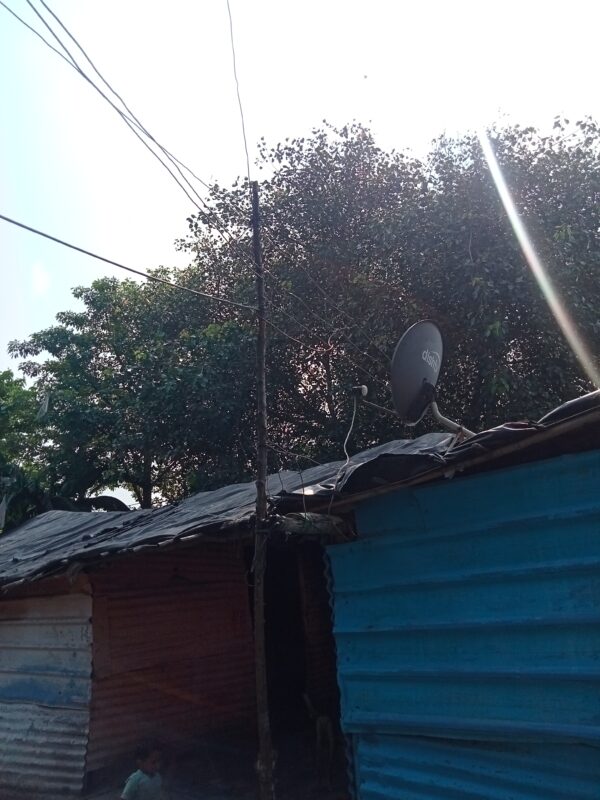
Solar sets
Naresh Singh, who shifted to the area only a few years ago, says that a nearby depot would supply power to them before it was shut down. “We used to get power from the depot. But ever since it was shut down, there seems to be no way to get electricity”, he says.
“All this area is owned by Delhi Development Authority (DDA) so we cannot do anything. Even if we remove a tree from here, they will either bulldoze our houses or fine us a hefty amount”, he says.
Many families in the area resorted to solar panels for power supply. “The solar panels really help us during summers. At least we can use fans or charge our phones,” says a woman who did not wish to be named. She adds that it becomes really difficult if the solar panels stop working or there is no sun.
“Right now, because it is Navratri, an official who works on the highway is giving us power supply for a few days”, she says. Asked about the official or how the arrangement is done, she is clueless.
Families near Akshardham floodplains go through the same situation as other places. “This is all government land. We are just dwellers here and we cannot apply for any electricity. We have our own generators and solar panels and this is how we survive”, says a woman on the condition of anonymity.
“We cannot apply for electricity because we are illiterate and will move to some other place once the officials bulldoze our huts here. This is our reality and there is no point in complaining because this is how we have been living”, she adds. Her husband works in a ‘big nursery’ in Mayur Vihar from where he charges the solar panel everyday and brings it back home.
No stability
Near Lalita Park, Thokar No. 10, all the houses were grazed to the ground on 16 September. Most of the families rented rooms in nearby areas. “We live in very precarious conditions. When we had houses here, there was no power supply or water supply. We had to go across the road for drinking water and light up lanterns or use solar panels for electricity. Now even this has been razed to the ground”, says Dinesh Kumar.
Kumar says that he cannot rent a room because he is a bachelor and faces social prejudice. He lives near the ruins with a few friends and makes a living from nearby nurseries. His friend, Pradeep Maurya, who works as a fruit seller, has rented an apartment in a nearby area and often considers going back home.
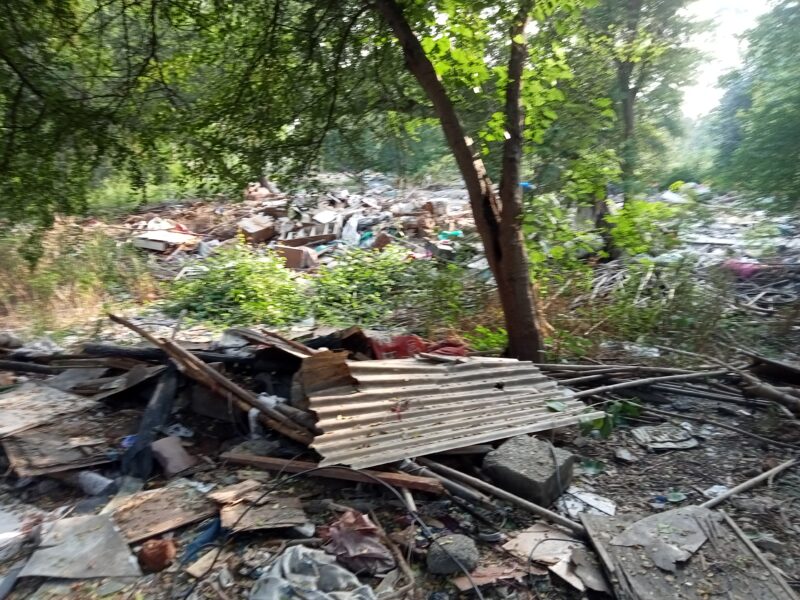
“I have lived here for 15 years but now it has been difficult to continue. Police bulldozed our houses because there was a lot of corruption and local feuds in these places”, says Pradeep.
Almost all the places Patriot visited, the problem of electricity and water supply, apart from existential crises due to evacuation and bulldozing of the houses, remained the most prominent. Families often look for stealing electricity, making holes in the pipelines of water supply running along the flyover, or seeking help from nearby corporations to make a living.
For more stories that cover the ongoings of Delhi NCR, follow us on:
Instagram: instagram.com/thepatriot_in/
Twitter: twitter.com/Patriot_Delhi
Facebook: facebook.com/Thepatriotnewsindia


